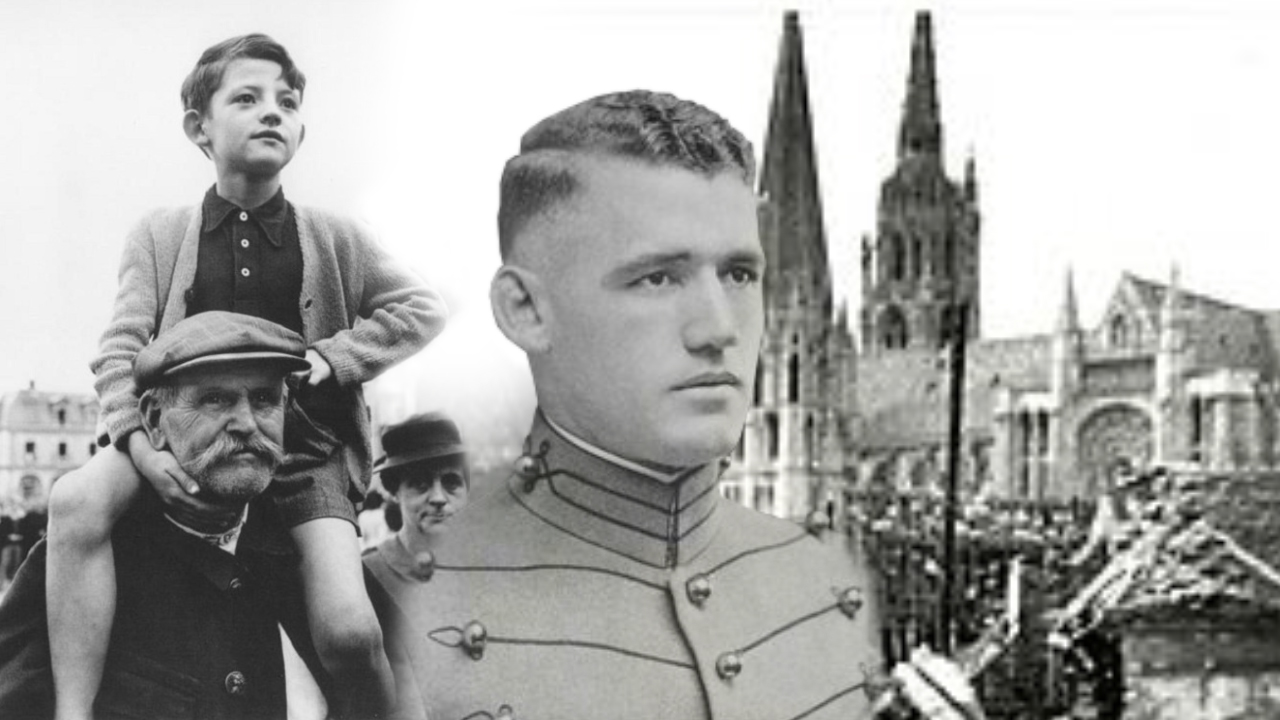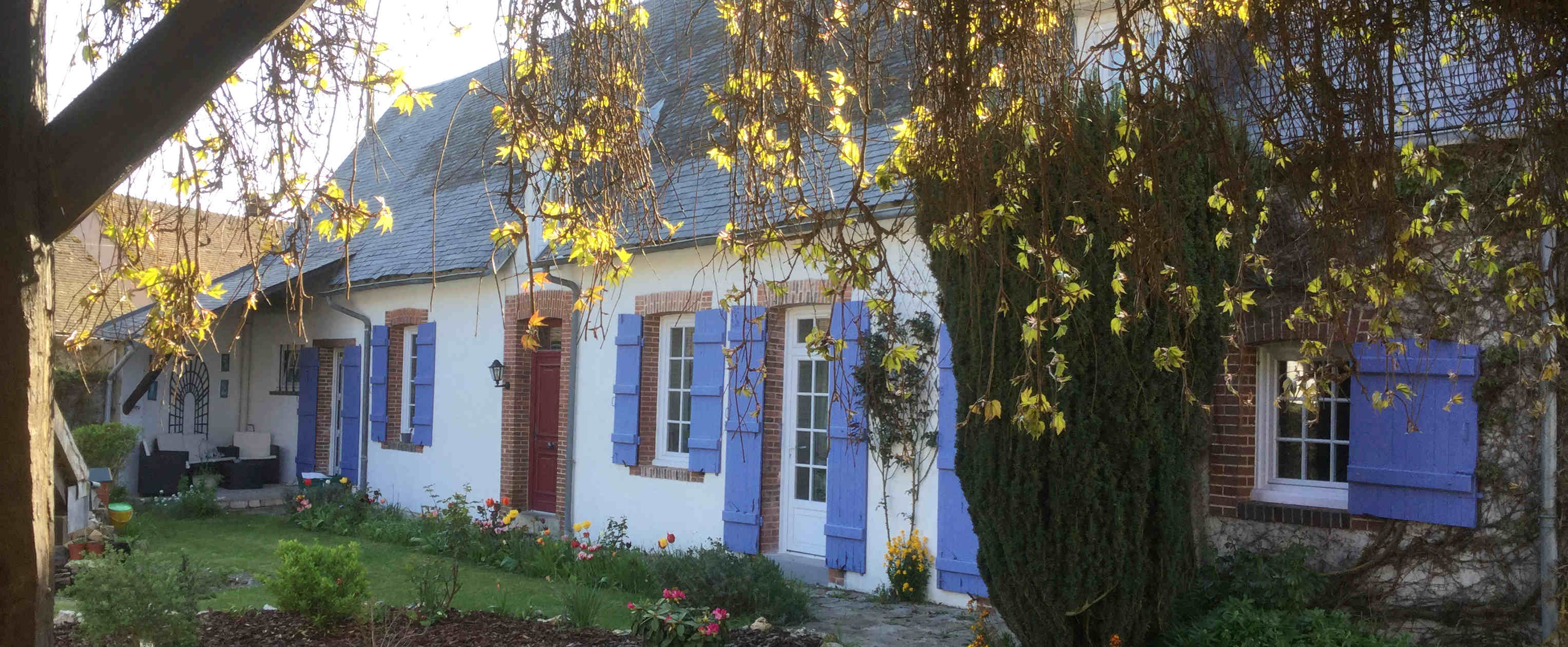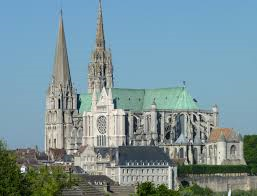Chartres is a commune and capital of the Eure-et-Loir department in France. It is located 96 km (60 mi) southwest of Paris. Chartres is famous world-wide for its cathedral.
History
Chartres was in Gaul one of the principal towns of the Carnutes, a Celtic tribe. In the Gallo-Roman period, it was called Autricum, name derived from the river Autura (Eure), and afterwards civitas Carnutum, "city of the Carnutes", from which Chartres got its name. The city was burned by the Normans in 858, and unsuccessfully besieged by them in 911.
During the Middle Ages, it was the most important town of the Beauce. It gave its name to a county which was held by the counts of Blois, and the counts of Champagne, and afterwards by the House of Châtillon, a member of which sold it to the Crown in 1286.
In 1417, during the Hundred Years' War, Chartres fell into the hands of the English, from whom it was recovered in 1432.
In 1528, it was raised to the rank of a duchy by Francis I.
In 1568, during the Wars of Religion, Chartres was unsuccessfully besieged by the Huguenot leader, the Prince of Condé. It was finally taken by the royal troops of Henry IV on 19 April 1591. On Sunday, 27 February 1594, the cathedral of Chartres was the site of the coronation of Henry IV after he converted to the Catholic faith, the only king of France whose coronation ceremony was not performed in Reims.
In 1674, Louis XIV raised Chartres from a duchy to a duchy peerage in favor of his nephew, Duke Philippe II of Orléans. The title of Duke of Chartres was hereditary in the House of Orléans, and given to the eldest son of the Duke of Orléans.
In the 1870-1871 Franco-Prussian War, Chartres was seized by the Germans on 2 October 1870, and continued during the rest of the war to be an important centre of operations.
In World War II, the city suffered heavy damage by bombing and during the battle of Chartres in August 1944, but its cathedral was spared by an American Army officer who challenged the order to destroy it.[1] On 16 August 1944, Colonel Welborn Barton Griffith, Jr. questioned the necessity of destroying the cathedral and volunteered to go behind enemy lines to find out whether the Germans were using it as an observation post. With his driver, Griffith proceeded to the cathedral and, after searching it all the way up its bell tower, confirmed to Headquarters that it was empty of Germans. The order to destroy the cathedral was withdrawn. Colonel Griffith was killed in action later on that day in the town of Lèves, 3.5 kilometres (2.2 miles) north of Chartres.[1][2] For his heroic action both at Chartres and Lèves, Colonel Griffith received, posthumously, several decorations awarded by the President of the United States and the U.S. Military, and also from the French government[3]
Following deep reconnaissance missions in the region by the 3rd Cavalry Group and units of the 1139 Engineer Combat Group, and after heavy fighting in and around the city, Chartres was liberated, on 18 August 1944, by the U.S. 5th Infantry and 7th Armored Divisions belonging to the XX Corps of the U.S. Third Army commanded by General George S. Patton.[4]
The Monuments Man of Chartres.

On August 16, 1944, an American soldier prevented the bombing of Chartres Cathedral. Featured below is an account by Dennis Aubrey of Via Lucis, our esteemed Board Advisor. American Friends of Chartres honors the memory of Colonel Welborn Griffin, whose humanistic sensibility and courage under the fire of combat prevented a catastrophe at Chartres.
This article is dedicated to the memory of Welborn Barton Griffith, Jr. His reference in the Wikipedia article about the Cathedral of Chartres reads: “All the glass from the cathedral was removed in 1939 just before the Germans invaded France, and it was cleaned after the War and releaded before replacing. While the city suffered heavy damage by bombing in the course of World War II, the cathedral was spared by an American Army officer who challenged the order to destroy it.”
“Colonel Welborn Barton Griffith, Jr. questioned the strategy of destroying the cathedral and volunteered to go behind enemy lines to find out whether the German Army was occupying the cathedral and using it as an observation post. With a single enlisted soldier to assist, Griffith proceeded to the cathedral and confirmed that the Germans were not using it. After he returned from his reconnaissance, he reported that the cathedral was clear of enemy troops. The order to destroy the cathedral was withdrawn, and the Allies later liberated the area. Griffith was killed in action on 16 August 1944, in the town of Lèves, near Chartres.”
Griffith was the G-3 of XX Corps under the command of Major-General Walton Walker during the Campaign of France after the Normandy breakout. Initially assigned to protect the south flank of the Patton’s Third Army, XX Corps secured the bridgehead at Le Mans and liberated Angers on 10 August 1944. The corps fought a successful five-day battle for Chartres from 15 – 19 August, and seized a bridgehead over the Aunay River. Chartres was a logistics center for the German Army and an important transportation nexus for the US forces.
By the end of August, the XX Corps had driven across six rivers-the Loire, Seine, Vesle, Marne, Aisne, and Meuse to the Moselle. Towns liberated by the armor and infantry of the Corps included Chartres, Mélun, Montrau, Fontainbleu, Chateau-Thierry, Epernay, Reims, and Verdun. This campaign where they raced across France prompted the Germans to name the XXth the “Ghost Corps.”
Griffith’s position as the G-3 made him responsible for the mobilization and deployment of units for combat and was a key staff position for the XX Corps. For Griffith to take the stance that he did to protect the cathedral – much less making a personal reconnaissance accompanied by a single rifleman – was an extraordinary decision.
In Memoriam Colonel Welborn Barton Griffith, Jr. (1901-1944)
Griffith was born on November 10 1901 in the small Texas town of Quanah, just south of the Oklahoma border. He graduated from West Point Military Academy, Class of 1925. He excelled at various sports, including four years as a tackle on the Army football team. He also participated boxing, wrestling, lacrosse and horsemanship.

Here is the citation from his Distinguished Service Cross:
The President of the United States of America, authorized by Act of Congress July 9, 1918, takes pride in presenting the Distinguished Service Cross (Posthumously) to Colonel Welborn Barton Griffith, Jr. (ASN: 0-16194), United States Army, for extraordinary heroism in connection with military operations against an armed enemy while serving as Operations Officer (G-3) with Headquarters, XX Corps, in action against enemy forces on 16 August 1944 at Chartres and Lèves, France. On 16 August 1944, Colonel Griffith entered the city of Chartres, France, in order to check the actual locations and dispositions of units of the 7th Armored Division which was occupying the city. Upon observing fire being directed at the cathedral in the center of the city, with utter disregard for his own safety, Colonel Griffith, accompanied by an enlisted man, searched the cathedral and finding that there were no enemy troops within, signaled for cessation of fire. Continuing his inspection of outlying positions north of the city, he suddenly encountered about fifteen of the enemy. He fired several shots at them, then proceeded to the nearest outpost of our forces at which point a tank was located. Arming himself with an M-1 rifle and again with complete disregard for his own safety, Colonel Griffith climbed upon the tank directing it to the enemy forces he had located. During the advance of the tank he was exposed to intense enemy machine gun, rifle, and rocket-launcher fire and it was during this action, in the vicinity of Lèves, France, that he was killed.
General Orders: Headquarters, Third U.S. Army, General Orders No. 75 (October 21, 1944)
Action Date: August 16, 1944

It is interesting that the commendation says nothing about his saving the cathedral from certain damage, if not destruction, by American artillery fire. Colonel Griffith also received the Croix de Guerre avec Palm, the Legion of Honor, and the Legion of Merit from the French government.
The story of Colonel Griffith only became known in 1994 when a French amateur historian in Lèves, Bertrand Papillon, investigated the American colonel who died liberating his village and who saved the beloved Cathédrale Notre Dame de Chartres. His researches uncovered the truth and he contacted the Griffith’s daughter with the full story. Every year, on August 16, flowers are placed in front of the building where he died. A plaque, honoring his heroic action, has also been erected on the building. Residents of Lèves saw him fall and die and within hours they had him covered with a blanket, bouquets of flowers and an American flag to await the American burial detail who buried him in a temporary grave.
As a final and sobering note on this history, in the spring of 1945 XX Corps liberated the German concentration camp at Buchenwald.

